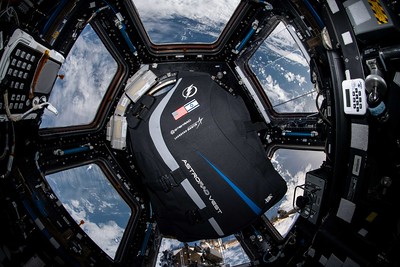
The latest issue of Upward, official magazine of the International Space Station (ISS) National Laboratory, highlights the AstroRad vest, a pioneering wearable technology designed to safeguard astronauts from harmful solar radiation during deep-space missions. Developed through a collaboration between StemRad and Lockheed Martin, the vest has undergone extensive testing through the ISS National Lab, leading to significant enhancements in its design and functionality.
NASA astronaut Kayla Barron, who evaluated the vest on the space station, describes it in Upward as “like a gravity blanket in space,” noting the balance it aims to strike between protection and mobility. She emphasized the importance of wearable, customized solutions for astronauts, calling the vest “an elegant solution to a challenging engineering problem.”
The AstroRad vest employs high-density polymers to selectively shield vital organs most vulnerable to radiation exposure, addressing cancer and radiation sickness risks. Insights from the ISS National Lab-sponsored investigation enabled StemRad and partners to improve the vest’s ergonomics and functionality, advancing efforts toward safer deep-space exploration.
The vest’s development involved extensive collaboration, with engineer Kat Coderre, deputy manager for deep space exploration advanced programs at Lockheed Martin, referring to the process as a “vest saga.” By utilizing the ISS National Lab, the team obtained invaluable feedback for refining the design for long-duration wear during solar particle events.
 TEXTILES.ORG
TEXTILES.ORG


